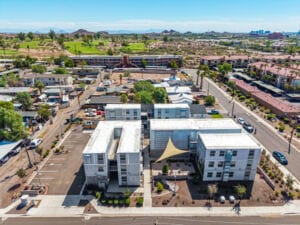Commercial real estate is suffering from a whole host of problems. From the switch to remote work to inflation, there are a lot of economic and societal factors affecting the total state of the market. But nothing is more detrimental to real estate than the massive US labor shortage.
How Labor Shortages are Affecting Commercial Real Estate
Commercial real estate is affected by employment trends more than any other real estate market. There are nearly twice the amount of job openings in the US as there are unemployed workers to fill them, meaning the demand for commercial real estate properties has lessened.
What is Affecting the Labor Shortage in the United States?
This problem is primarily the cause of the Great Resignation and poor employment conditions in the United States. While rocketing inflation and the threat of an upcoming recession have improved the US unemployment rate, the Great Resignation/Shuffle still continues in late 2022.
What Does This Mean for Commercial Real Estate Developers?
Does that mean investing in commercial real estate isn’t advisable? Not at all. Commercial real estate will always be necessary, as there are many jobs that can’t be performed remotely, either full-time or part-time. Crashes or recessions are also the best time to develop cheaper properties. The market will always rebound as the economy ebbs and flows in this fashion.
To get ahead of the commercial real estate game, adopt an automation platform that empowers real estate development teams to achieve predictable outcomes from even the most complex projects. Software like Northspyre can leverage analytics to drive proactive decision-making at every stage of your project’s lifestyle, so you can plan accordingly from a data dashboard.
How Labor Shortages Create a Disastrous Domino Effect
In a Counselors of Real Estate article discussing the issues affecting real estate as a whole, labor shortages take the sixth spot. Inflation, geopolitical risks, hybrid work, supply chain disruptions, and the switch to green energy are ranked higher than a lack of able workers.
However, all of these factors are made worse by labor shortages. For example, hybrid or remote work discourages employers from buying large office buildings or workspaces in general. Supply chain disruptions are made worse because there are fewer people manning them.
How Construction Labor Shortages Make the Problem Worse
Although construction employment jumped by 16,000 in August 2022, we’re not out of the woods yet. There’s still a massive shortage in construction due to societal and economic factors.
This trend started in 2008 when a national recession spread through multiple industries, including construction. Since 2012, the construction industry has been on a steady incline, but the pandemic caused a record-high unemployment spike and issues hiring able workers.
Without enough construction workers, commercial real estate developers may struggle to meet deadlines, which could cause them to cancel projects and potentially lose profits. At the same time, raising your prices will make the real estate crisis worse and reduce the number of potential buyers.
How to Fix Labor Shortages and the Commercial Market
There are multiple reasons why the labor shortage preserves, and will continue to do so, for the next decade. A lack of educated or specialized talent, cost-of-living increases that make less than $20 an hour unlivable, and prevailing workplace abuse are just some of the problems.
Employers, real estate developers, and state and federal officials can do a lot to fix the labor crisis, but it can’t be done in a day. We must listen to what employees need and deliver it in a way that’s possible for each business. Otherwise, the labor crisis will only get worse, not better.




